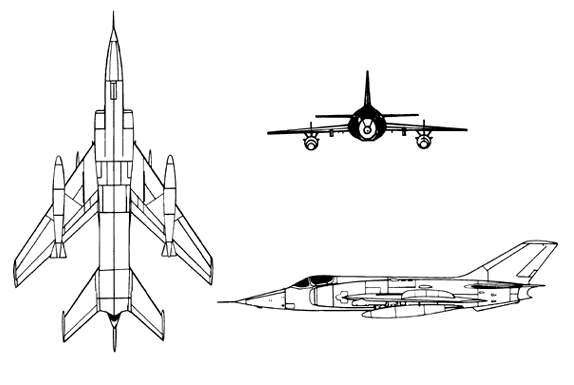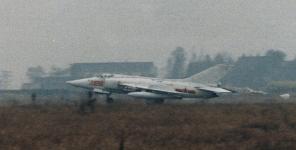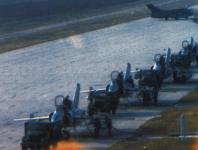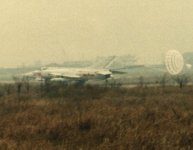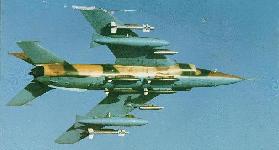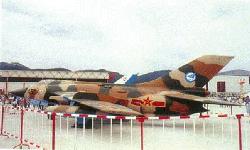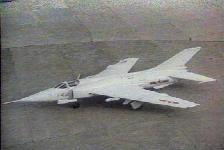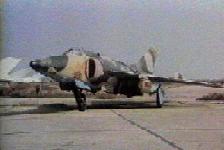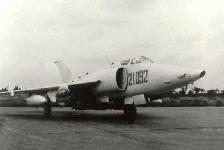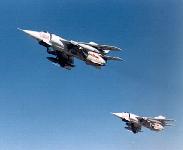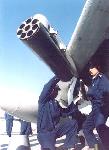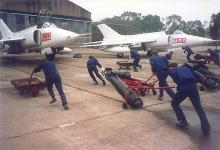





It carries a cannon in each wing, mounted near the fuselage, and it can be loaded with air to air weapons. It can carry bombs and canisters in its hold and various kinds of bombs, rockets and spare fuel tanks in the racks under its wings.
This derivative of the J-6 fighter originated in August 1958 as a Shenyang design proposal. Reponsibility was assigned to Nanchang. The prototype program was cancelled 1961, but kept alive by small team and resumed officially 1963. The first flight came on 04 June 1965, with preliminary design certificate awarded and preproducton batch authorised late 1965. Further modifications were found necessary, leading to flight test of two much modified prototypes from October 1969. Series production was approved at the end of 1969, with deliveries beginning 1970.
A total of approximately 1,000 aircraft were built, of which nearly 600 were the improved Q-5A variant. An small number, perhaps a few dozen, of the Q-5As were modified to carry nuclear weapons.
PLAAF equipment holdings have improved only slowly, hampered by the need for hard currency, as most Chinese equipment upgrades have required foreign assistance. The upgrade of the Q-5 aircraft centers on the addition of French inertial guidance and attack systems, including a heads-up display and laser range-finder.
As Qiang-5 has been fitted with laser-ranging sensors, its strike accuracy has been greatly improved. The ALR-1 laser-ranging sensor and the heads-up laser-ranging fire control system, which consists of the new-type heads-up display and the air data computer, both have continuous computerized point-of-impact functions. The range of the ALR-1 laser-ranging sensor is 20-10,000 meters and its range precision is 5 meters. Its overall performance is roughly equivalent to that of the British 105D and the French TMV of the 1980s.
The wings are mid-mounted, sharply swept-back, and tapered with blunt tips and wing fences. Two turbojets are located inside the body with semicircular air intakes and two exhausts. The fuselage is thick, flattened, with an upward taper to the rear section. The tail flats are high-mounted on the body, swept-back, and tapered with square tips. The sharply swept-back tail fin has a blunt tip.
Specifications | |
| Builder | Nanchang Aircraft Company |
| Wing Span | 31 ft, 10 in (9.8 m) |
| Length | 54 ft, 10 in (16.74 m) |
| Height | 14.8 feet (4.51 m) |
| Weight | 12,000 kg full load |
| Engine | 2 Shenyang Wopen-6 5,732 lbst turbojets |
| Internal Fuel | 2883kg |
| In-Flight Refueling | No |
| Drop Tanks | two 201-gal external fuel tanks |
| Maximum speed | 1210 km/hr |
| Cruising speed | 910 km/hr |
| Combat Radius | 600 km hi-lo-hi 400 km lo-lo-lo |
| Service Ceiling | 16000 meters |
| Armament | 1000-2000 kg
|
| Sensors | High Fix radar, Balistic bombsight |
| Crew | one |
| Cost | |
| Similar Aircraft | Super Etendard, Yak-38 Forger, Mirage F1. |
| User Countries | Bangladesh, North Korea, Pakistan, People�s Republic of China. |
